Standard [CURRENT]
ASTM E 2587:2025
Standard Practice for Use of Control Charts in Statistical Process Control
- Publication date
- 2025
- Original language
- English
- Pages
- 29
- Publication date
- 2025
- Original language
- English
- Pages
- 29
- DOI
- https://dx.doi.org/10.1520/E2587-25
Product information on this site:
Quick delivery via download or delivery service
Buy securely with a credit card or pay upon receipt of invoice
All transactions are encrypted
Short description
1.1 This practice provides guidance for the use of control charts in statistical process control programs, which improve process quality through reducing variation by identifying and eliminating the effect of special causes of variation. 1.2 Control charts are used to continually monitor product or process characteristics to determine whether or not a process is in a state of statistical control. When this state is attained, the process characteristic will, at least approximately, vary within certain limits at a given probability. 1.3 This practice applies to variables data (characteristics measured on a continuous numerical scale) and to attributes data (characteristics measured as percentages, fractions, or counts of occurrences in a defined interval of time or space). 1.4 The system of units for this practice is not specified. Dimensional quantities in the practice are presented only as illustrations of calculation methods. The examples are not binding on products or test methods treated. 1.5 This standard does not purport to address all of the safety concerns, if any, associated with its use. It is the responsibility of the user of this standard to establish appropriate safety, health, and environmental practices and determine the applicability of regulatory limitations prior to use. 1.6 This international standard was developed in accordance with internationally recognized principles on standardization established in the Decision on Principles for the Development of International Standards, Guides and Recommendations issued by the World Trade Organization Technical Barriers to Trade (TBT) Committee.
ICS
03.120.30,
35.240.50
DOI
https://dx.doi.org/10.1520/E2587-25
Also available in
Loading recommended items...
Loading recommended items...
Loading recommended items...
Loading recommended items...

